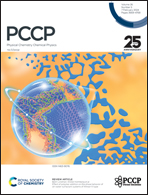Te-doped-WSe2/W as a stable monolith catalyst for ampere-level current density hydrogen evolution reaction†
Abstract
The development of efficient electrocatalysts for the hydrogen evolution reaction (HER) holds immense importance in the context of large-scale hydrogen production from water. Nevertheless, the practical application of such catalysts still relies on precious platinum-based materials. There is a pressing need to design high-performing, non-precious metal electrocatalysts capable of generating hydrogen at substantial current levels. We report here a stable monolith catalyst of Te-doped-WSe2 directly supported by a highly conductive W mesh. This catalyst demonstrates outstanding electrocatalytic performance and stability in acidic electrolytes, especially under high current conditions, surpassing the capabilities of commercial 5% Pt/C catalysts. Specifically, at current densities of 10 and 1200 mA cm−2, it exhibits a minimal overpotential of 79 and 232 mV, along with a small Tafel slope of 55 mV dec−1, respectively. The remarkable catalytic activity of Te–WSe2 can be attributed to the exceptional electron transfer facilitated by the stable monolithic structure, as well as the abundant and efficient active sites in the material. In addition, density functional theory calculations further indicate that Te doping adjusts H atom adsorption on various positions of WSe2, making it closer to thermal neutrality compared to the original material. This study presents an innovative approach to develop cost-effective HER electrocatalysts that perform optimally under high current density conditions.

- This article is part of the themed collection: 2024 PCCP HOT Articles


 Please wait while we load your content...
Please wait while we load your content...